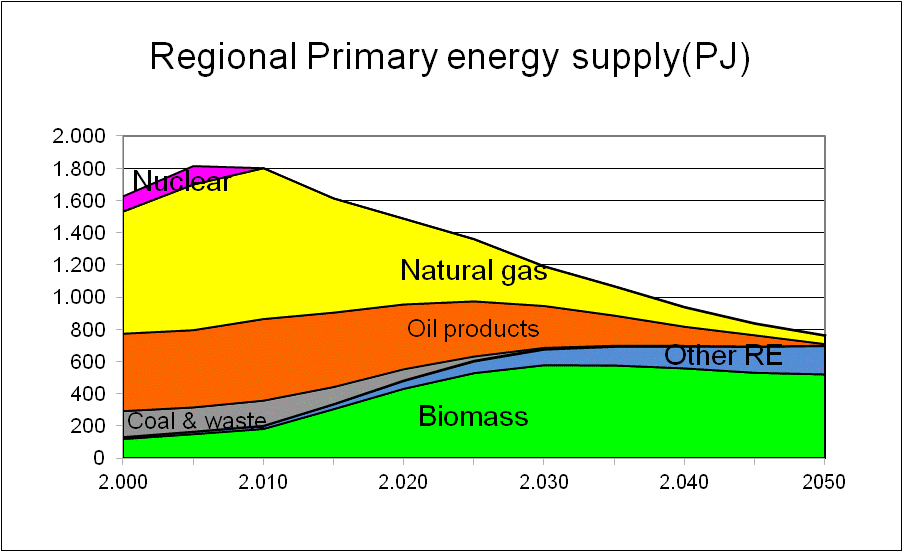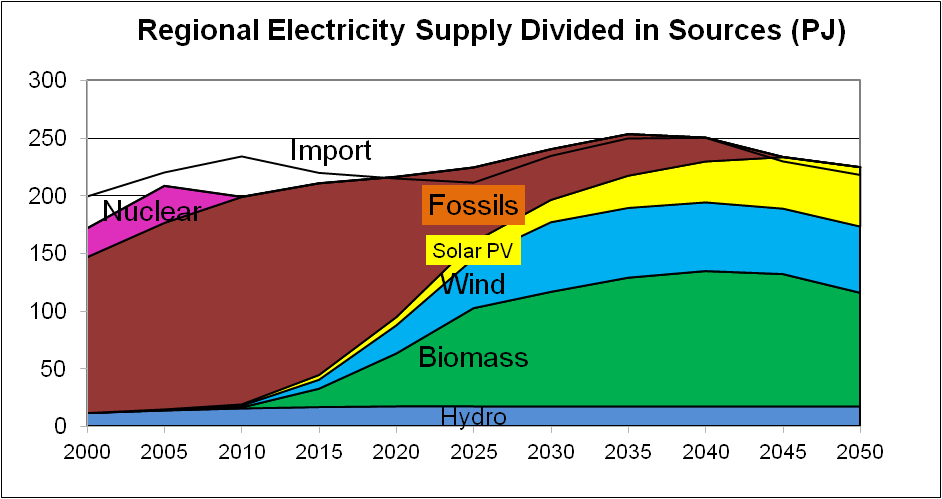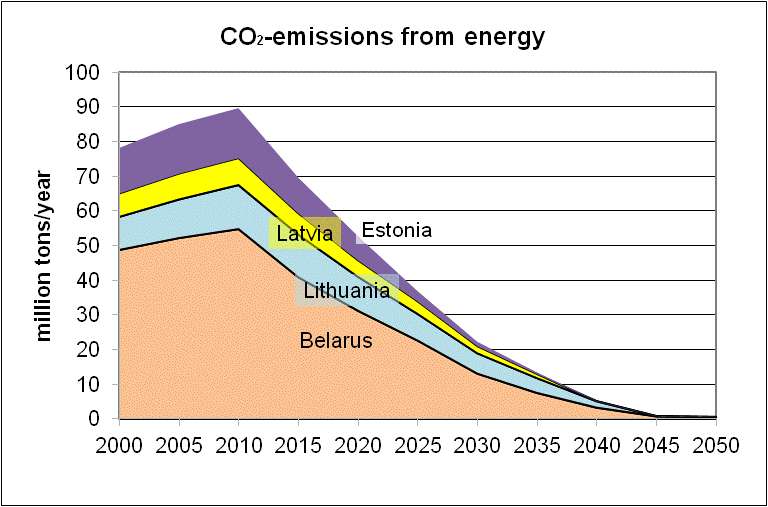| About Us | Contact Us | Member Database | Contact Database | Support Us |
Version 2011.
Based on the INFORSE Visions for Belarus,
Latvia, and Lithuania, a
new regional
vision is developed that shows the common situation of the three
countries as smaller, Eastern European countries, how they
can cooperate with
electricity
exchange, and how they can become fulfill their energy needs with
renewable energy.
Renewable Energy
The vision shows that all the
countries have large potentials for use of biomass and energy plantations
on
unused lands. The biomass is both wood from forests and use of straw
for energy. Wood is widely used today in all three countries and there
is little additional potentials, while straw is hardly used today.
Therefore the largest increase in renewable energy is
with straw and energy plantations, sources that can
be brought into use within a decade with most of the potential used
already in 2020. Of the different solid
biomass sources, energy plantations is the most challenging: it requires
stable demand at a sufficient price and there are few commercial
energy plantations in the region in spite of substantial unused land
in all three countries. In Scandinavia, in particular in Sweden, there
are successful commercial energy plantations with willow as the main
species used.
With the increasing prices of gas and other fossil fuels, biomass is
becoming the cheapest source of energy in all three countries. For
some months in the second half of 2008 biomass was cheaper than
coal.
- Wind power is the second most important form of renewable energy in all countries.
- Solar is also expected
to be important
in the future as the prices come down.
Valuable additional contributions are expected from: - Hydropower that is used today, but has little potential for extension in a sustainable way
- Biogas that has some potential for expansion and is used on small scale in all countries
- Liquid biofuel, though the potential is quite limited at least with 1. generation biofuel that is used in Latvia and Lithuania today
- Geothermal heating though the potential and costs are uncertain as the geothermal layers are quite deep in the region
The proposed development of renewable energy form the three countries is shown in this graph:

The potential for energy efficiency is large in all three countries,
in all sectors, but primarily in buildings and industry. Therefore
large increases in energy efficiency is included in the vision. In addition
to the end-use efficiency increases, also more efficient power production
is proposed, with increase of combined heat and power (CHP) and with
change to state-of-the art power plants.
The countries are expected to have growth in all sectors, and in
Latvia and Lithuania in particular in the transport sector, but the growth
is expected to be considerable less than the increase in energy
efficiency. The trends for housing shows an increase in the order of
0.5%/year of heated floor space for all countries.
Combining the visions for the three countries give the following proposed development of the energy balance for the three countries together:

While the above primary energy supply shows large reductions with the vision, the electricity supply is different as can be seen from the graph below:

The electricity balance
for the region shows a possible increase in electricity use. This is
mainly because of an expected change to electricity
in transport, as the electricity demand in the other sectors is declining
because of the strong energy efficiency proposed.
The use of fossil fuel, primarily gas, has increased since 2000,
and will continue to increase until 2010 with the closure of the Signaling
nuclear power plant, but the vision shows that renewable energy can reduce
fossil fuel use in the power sector use already in 2020 and can compensate
it fully until 2050. The increase in biomass for electricity after 2030
comes from a change from biomass in households to power generation without
increase in overall biomass use, This will be possible with better houses
and boilers as well as with increase in district heating.
The region is presently net electricity importer (mainly from Russia), but it can reduce the imports until 2020. For the fossil fuel free situation in 2050, a small electricity import is expected. This could come from Russia and/or from Scandinavia, both of which have larger renewable energy potentials than this region.
The result of the visions would be a phase out of the CO2 emissions from energy until 2050. By far the largest emissions come from Belarus, but the main increases in emissions since 2000 come from Lithuania and Latvia, and they might therefore have the largest challenges.

This Vision is
developed in cooperation with Latvian Green Movement, Atgaja
in Lithuania, and Minsk Division of International Academy of Ecology
in 2008-11.
For description
of the national visions behind this small regional visions, and for background
documentation with assumptions, descriptions of current situations
etc., see: Belarus, Latvia,
Lithuania, and Estonia.
Russian version
of Belarus vision: (Contents-page).
Read more about INFORSE-Europe
activities in the region 2010-2011.
This regional vision
and the national visions behind it was developed with support from Nordic
Council of Ministers, from the AirClim Secretariat in Sweden, and partly
from the European Commission.
The visions expresses the findings and the
views of the authors and of INFORSE-Europe and not necessarily of the
funders.
![]()
Return
to Sustainable Energy Visions
Return to INFORSE-Europe